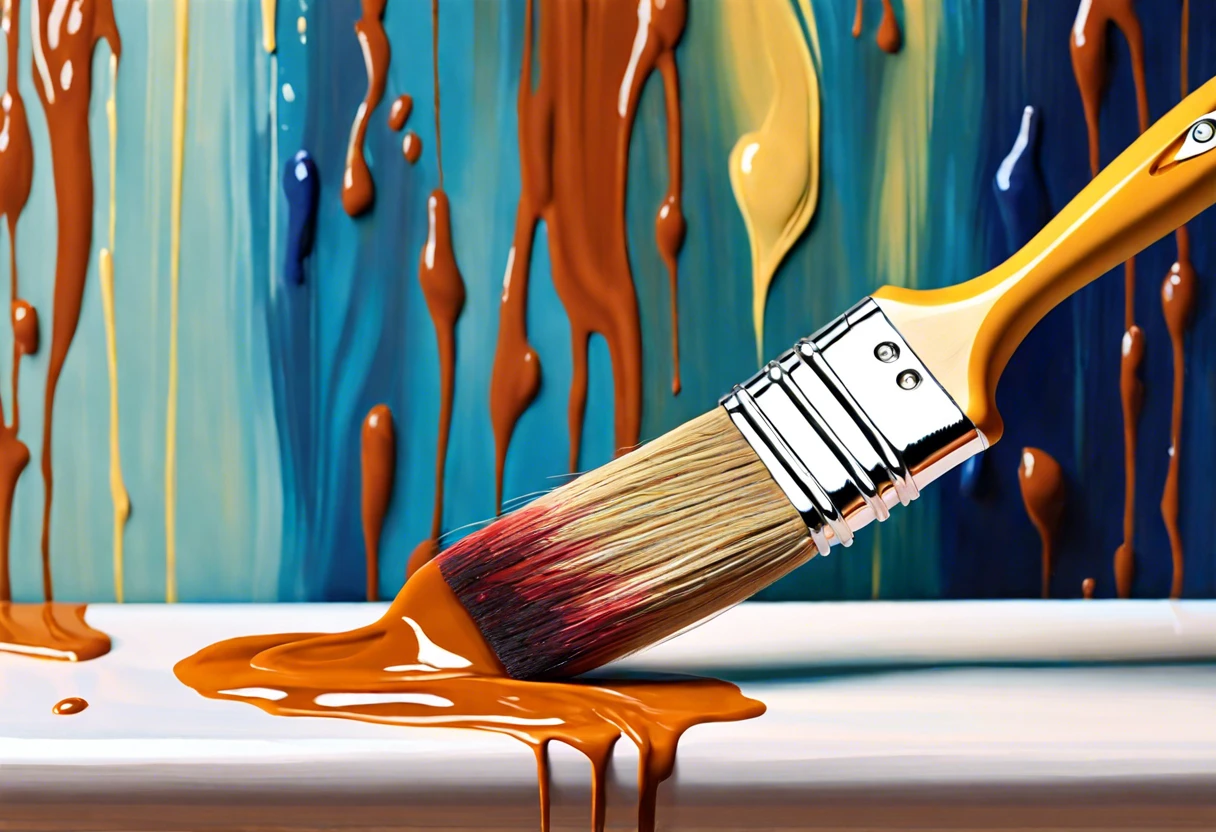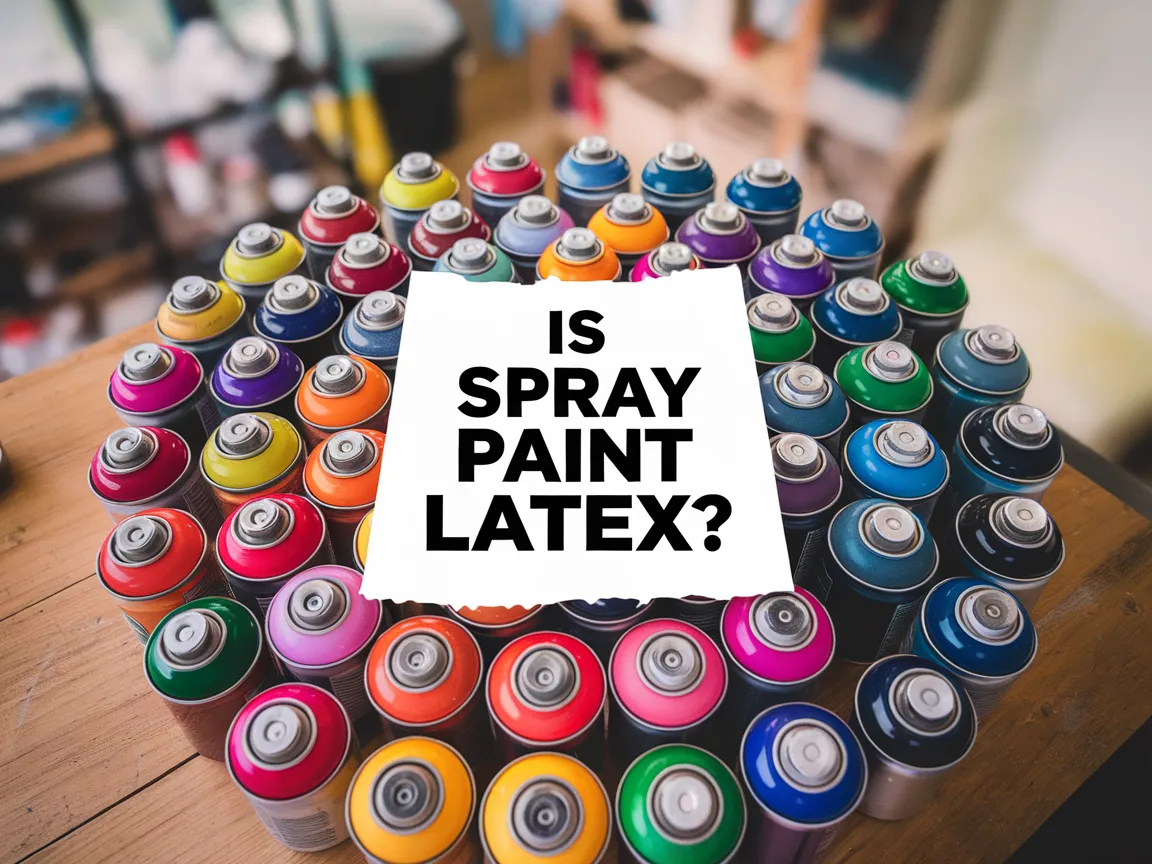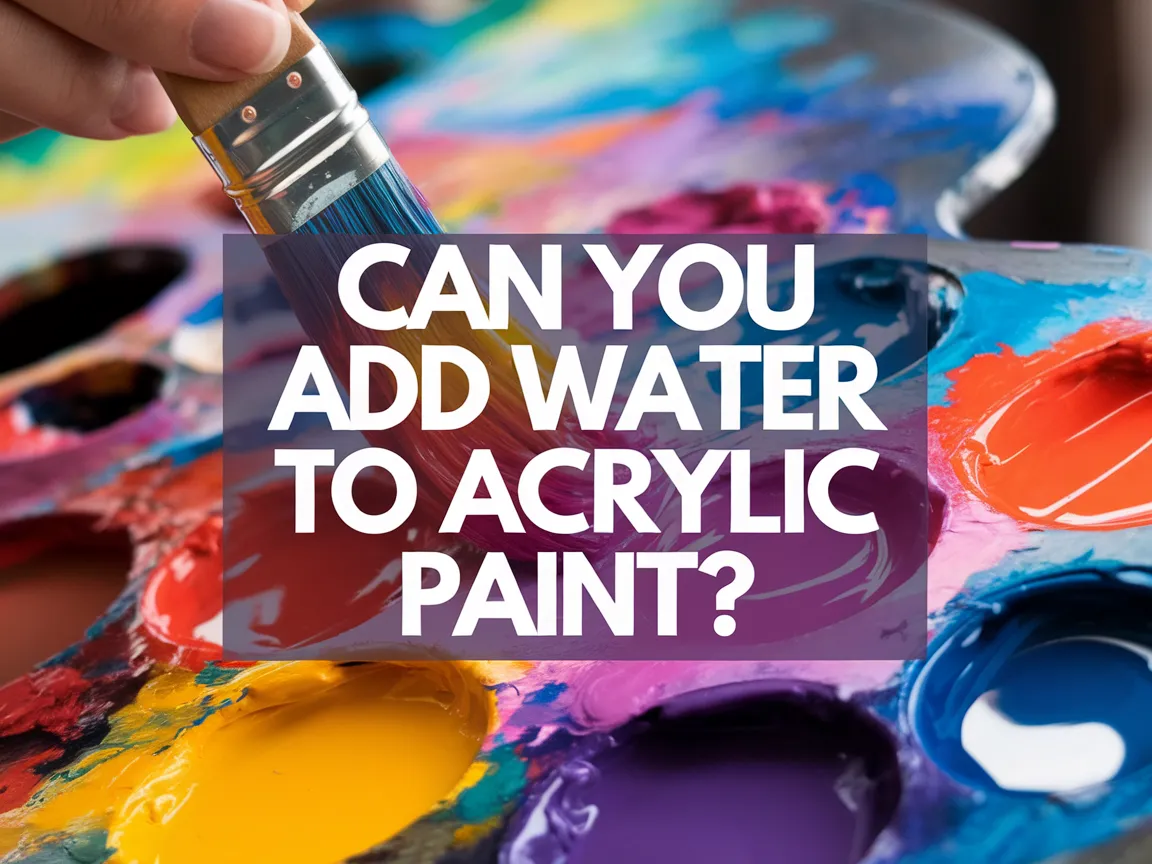Can Oil Based Paint Go Over Water Based Paint?
Published on: November 21, 2025 | Last Updated: October 1, 2025
Written By: paint_answered
Oil based paint is a type of paint that uses oils as its main ingredient. It dries hard and shiny, making colors pop beautifully!
Now, let’s dive into the question: can oil based paint go over water based paint? It’s crucial to know this so you don’t mess up your project. Trust me, I’ve seen many painters struggle with this issue.
In this guide, you’ll learn important tips on oil based paint, details on applying it over water based paint, ideal color choices, the best finishes, potential problems, and some creative DIY ideas. I can’t wait to help you with your painting journey!
Contents
- 1 Can Oil Based Paint Go Over Water Based Paint?
- 2 What is Oil-based Paint?
- 3 Important Considerations Before You Start
- 4 Preparation Challenges When Layering Oil and Water-Based Paints
- 5 Key Benefits of Choosing Oil-Based Paint
- 6 Environmental Impact of Oil-Based vs. Water-Based Paints
- 7 Steps for Applying Oil-based Paint Over Water-based Paint
- 8 Types Of Finishes in Relation to Oil and Water-based Paint
- 9 Factors Affecting the Applicability Of Oil-based Paint Over Water-based Paint
- 10 Common Issues When Applying Oil-based Paint Over Water-based Paint
- 11 Alternative Painting Methods: Oil vs. Water-Based
- 12 Understanding Paint Types: Comparisons and Best Uses
- 13 Creative DIY Project Ideas Using Oil Over Water Based Paint
- 14 Frequently Asked Questions About Oil and Water Based Paints
- 15 Conclusion: Successfully Layering Oil Based Paint Over Water Based Paint
- 16 Useful Resources
Can Oil Based Paint Go Over Water Based Paint?
No, you can’t put oil-based paint over water-based paint directly. The oil won’t adhere well due to the water-based paint’s surface. Always use a primer if you want to paint oil over water, ensuring a better bond! Professional painters often explore unique paint techniques and color choices that require specialized preparation methods, understanding aircraft paint strategies.
The Finishing Touch
A freshly painted wall is a blank canvas. The best way to bring your room to life is with a single piece of statement art that ties everything together.
Browse Wall Art at Big Wall DecorWhat is Oil-based Paint?
Oil-based paint consists of pigments suspended in drying oils, typically linseed oil. These paints offer excellent durability and are often preferred for their rich finish, with a drying time of 6 to 8 hours before they’re handle-ready. If you’re looking to customize your equipment, you might want to customize your gear with precision painting.
Using oil-based paint over water-based paint can be tricky. I’ve had my share of projects where I considered this route—a real head-scratcher.
I’ve used it before for outdoor furniture. Oil-based paint gave my pieces a silky finish, perfect for the weather. But can water-based paint really matte down oil-based layers? This question lingered in my mind, especially as I thought about sealing (Protecting) oil paint after finishing. My experience with water-mixable oil paints changed my perspective, revealing just how versatile these products can be. If you’re wondering about painting techniques for different surfaces, painting apartment walls requires specific skills.
Important Considerations Before You Start
What do you need to know before diving in?
- Quality Primer: Use a high-quality primer like Zinsser Cover Stain. It’s essential for proper adhesion of oil-based paint over water-based paints.
- Cleaning Degreaser: Use a degreaser such as Krud Kutter. It removes dirt and grease, prepping your surface for a better finish.
- Safety Gear: Don’t forget safety glasses and NIOSH-approved respirators. They protect you from harmful fumes while painting.
- Sandpaper: A variety like 220-grit is crucial for smoothing surfaces. This ensures better paint adherence and a professional look.
You should now have a good understanding of key factors to consider before starting. In the next part, we’ll discuss preparation hurdles when combining oil and water-based paints.
Also See: Can You Paint Acrylic Over Latex Paint? Yes, You Can!

The Finishing Touch
A freshly painted wall is a blank canvas. The best way to bring your room to life is with a single piece of statement art that ties everything together.
Browse Wall Art at Big Wall DecorPreparation Challenges When Layering Oil and Water-Based Paints
Understanding the challenges in surface preparation can save you from headaches later.
-
Removing Old Paint
If there’s old water-based paint, you may need to strip it. Options like a heat gun or solvent can help. A non-toxic paint remover gets the job done without dangerous fumes.
-
Surface Texture
Sand the surface to create a profile for better adhesion. Use a 120-grit (P120) sandpaper. This method also ensures uniform paint application and prevents peeling.
-
Primer Selection
Choose an oil-based primer when applying oil over water. Some brands like Kilz provide excellent bonding. Avoid using water-based primers for this method; they won’t provide the needed grip.
We covered the difficulties in layering oil and water-based paints. We will now cover the key advantages of using oil-based paint.
Key Benefits of Choosing Oil-Based Paint
Why should you choose oil-based paint in your projects? Here are some standout benefits:
| Benefit | Description | Application Techniques |
|---|---|---|
| Durability | Oil-based paint offers a longer lifespan and stands up to tough conditions. | Ideal for exterior applications like doors and shutters. |
| Finish Quality | It provides a rich, glossy finish that enhances colors. | Perfect for furniture and cabinetry for a professional look. |
| Moisture Resistance | Oil paints resist rotting and mildew better than most water-based alternatives. | Best suited for kitchens and bathrooms. |
We have now covered the advantages of oil-based paint. The next section discusses the environmental impact of oil-based versus water-based paints.
Environmental Impact of Oil-Based vs. Water-Based Paints
Considering the environmental aspects of your paint choice is becoming increasingly important.
-
Volatile Organic Compounds (VOCs)
Oil-based paints often contain higher VOCs, which can harm air quality. Select low-VOC options when available.
-
Biodegradability
Most water-based paints are more environmentally friendly regarding disposal. Proper cleanup helps minimize waste.
That covers the environmental impact of oil-based and water-based paints. Let’s now take a look at applying oil-based paint over water-based paint.

Steps for Applying Oil-based Paint Over Water-based Paint
Here are the steps for applying oil-based paint over water-based paint. Follow these closely for the best results.
-
Preparation Of the Surface
First, clean the surface thoroughly. Use mild soap and water to remove dirt and grease. Rinse completely and let it dry for at least 24 hours. Proper cleaning improves adhesion.
If there’s any peeling or chipping paint, remove it. Use a scraper or sandpaper (About 120 Grit) to create a smooth surface, which helps the oil paint bond better. You’ll appreciate this later!
-
Testing Compatibility
Before proceeding, test a small area. Use a corner no larger than 10 cm² (About 4 In²) and apply a bit of dry oil paint. Wait a day to check for any reactions like peeling or bubbling.
If there are no negative effects, you’re good to go! Don’t skip this step; it shows how the paint will likely perform on the entire surface.
-
Application Techniques
Apply an oil-based primer for painting first if the water-based paint is heavily applied. A synthetic brush or roller provides a smooth finish. Aim for a temperature between 10°C and 32°C (50°F and 90°F) while painting to ensure good results.
After priming, let it dry for the time suggested on the primer can. I’ve found that waiting longer often prevents issues like mismatching or uneven drying.
-
Cleaning Up
Once you’ve finished applying the paint, clean the tools with mineral spirits or paint thinner. Store any leftover oil paints in a cool, dry place to maximize their lifespan.
Handle any spills or drips immediately with a cloth; it’s much easier now than later when it sets! Trust me, it’s a messy job, so good cleaning skills help.
Types Of Finishes in Relation to Oil and Water-based Paint
Let’s move on to the types of finishes. We’ll cover oil-based paints, water-based paints, water-based primers, and their interactions.
-
Oil-based Paints
Oil-based paints have a rich, durable finish. You can use them on most surfaces, but remember: you can’t apply oil over water-based paint without proper preparation.
-
Water-based Paints
Water-based paints are easy to work with and dry quickly. You can use them on oil-based surfaces, but ensure they’re clean and primed first.
-
Water-based Primers
Water-based primers can prepare both paint types. When applied correctly, they can bridge the gap, allowing water-based paint to adhere to an oil-based surface.
-
Hybrid Formulations
Some paints blend oil and water components. These can often go over either type, but always check the manufacturer’s guidelines for best results.
One thing I’ve learned from my journey is that I love using oil-based paints for their smooth finish. You can’t deny how robust and long-lasting they are on wood surfaces!
Factors Affecting the Applicability Of Oil-based Paint Over Water-based Paint
What factors determine how oil paint layers react with water-based paint?
-
Surface Preparation: A clean, well-prepped surface improves oil paint adherence over water-based paint.
-
Drying Time: If the water-based paint isn’t completely dry, oil paint won’t bond correctly, risking delamination.
-
Paint Compatibility: Not all oil paints can easily overlay water-based paints; always check manufacturer instructions.
-
Environmental Conditions: High humidity or low temperatures can affect drying times and paint adhesion, complicating layering.
Common Issues When Applying Oil-based Paint Over Water-based Paint
When my friend tried to apply oil-based paint over her old water-based coat, it bubbled and peeled. Yikes! That’s why it’s crucial to check for compatibility first.
The Finishing Touch
A freshly painted wall is a blank canvas. The best way to bring your room to life is with a single piece of statement art that ties everything together.
Browse Wall Art at Big Wall DecorTo fix this, she should strip the surface with a paint remover and apply a suitable water-based primer before the oil paint. This ensures a strong bond and keeps it clean. Simple as that!
Alternative Painting Methods: Oil vs. Water-Based
Exploring other painting methods can open up new creative avenues for your projects.
-
Layering Techniques
Instead of oil over water, consider layering water-based paints before finishing with oil-based topcoats for depth and texture.
-
Mixed Media Approaches
Mix both paint types in your projects! Water-based backgrounds with oil-based details can create stunning contrasts.
Understanding Paint Types: Comparisons and Best Uses
Knowing the differences can help you choose the right paint for your projects.
| Type of Paint | Best For | Adhesion Requirements |
|---|---|---|
| Oil-based Paint | Exterior surfaces and furniture | Requires oil primer on water-based layers |
| Water-based Paint | Interior walls and crafts | Clean, dry oil-based surfaces must be primed |
| Hybrid Paints | Versatile projects | May adhere to both surfaces; check labels |
Creative DIY Project Ideas Using Oil Over Water Based Paint
How about creating a stunning layered abstract canvas? You can use oil-based paints to add rich textures over a vibrant water-based background. Or, consider upcycling old furniture with a funky two-tone look using the same technique!
For my abstract canvas, I’d start with a basic 16×20-inch (40×50 Cm) canvas, which typically costs around $10. Plan to spend another $15 on acrylic paints; oil paints may add $20 more. Total time? Just a few hours for painting plus drying time! If you’re curious about exploring digital art techniques, digital animation offers exciting possibilities.
If you want to explore more, consider mixing oil and water-based mediums. You can create a sealing layer with a water-based topcoat over your oil paint to lock in those vivid colors. Or, try using specialty binders or additives for unique effects – it’s a fun experiment!
Frequently Asked Questions About Oil and Water Based Paints
Now let us look at some common questions I typically get asked.
What Preparation is Needed Before Applying Oil Based Paint?
Yes, preparation is critical before applying oil based paint. Clean surfaces remove dirt and dust, then sand for better adhesion; it increases bonding and longevity. Use primer if necessary to enhance the durability and smooth finish of the paint. If you’re wondering about painting techniques specific to apartment spaces, painting apartment walls requires careful consideration.
How Long Should I Wait Between Coats?
It’s advisable to wait about 24 hours between coats of oil based paint. This waiting period allows the paint to dry adequately and prevents mingling, ensuring a flawless finish. Humidity and temperature can also influence drying times, so keep that in mind!
What if the Paint Peels or Cracks?
If the paint peels or cracks, it often means the application wasn’t performed correctly. Checking for moisture behind the paint or insufficient surface prep could help. Stripping the faulty paint and reapplying it properly can prevent future issues.
What Tools Are Best for Applying Oil Based Paint?
The best tools for applying oil based paint include high-quality brushes and rollers. Brushes made of natural bristles work effectively, giving a smooth finish. Choose every tool carefully, as the right tools can enhance precision and reduce application defects. Professional painters often explore unique techniques that challenge traditional painting methods, such as painting gravity-defying perspectives.
Can Water Based Paint Go Over Oil Based Paint?
No, you typically can’t apply water based paint directly over oil based paint. First, proper prepping like sanding and priming the oil layer is essential for adhesion. This approach ensures the top layer bonds well, avoiding peeling in the future. If you want to transform your furniture with a professional finish, check out these expert techniques for refinishing furniture.
How to Seal Oil Paint?
To seal oil paint, use a clear oil-based sealer or varnish. Sealing protects your artwork from dust and damage while enhancing color vibrancy. Proper sealing contributes to longevity, decreasing the chance of fading or wear from environmental factors over time. If you’re considering professional painting services, you might want to explore average exterior painting costs for comprehensive protection.
Also See: Can Acrylic Paint Be Used for a Mural? Here’s How!
Conclusion: Successfully Layering Oil Based Paint Over Water Based Paint
We covered key topics like what oil-based paint is, important considerations before starting, steps to apply oil-based paint over water-based paint, recommended color palettes, types of finishes, factors affecting applicability, common issues encountered, and creative DIY project ideas.
So, can oil-based paint go over water-based paint? The answer is yes, but it requires proper preparation and technique. If you have any further questions about your painting projects, don’t hesitate to ask.
For additional insights and resources, visit Paint Answers.
Useful Resources
- Smith, R. (2003). The Artist’s Handbook of Materials and Techniques (5th ed.). New York, NY: Knopf.
- Can you Put Oil Based Paint Over Water Based Paint | NoBroker Forum
- How to Paint Over Water Based Paint









